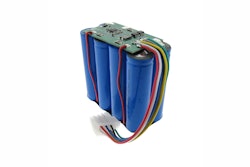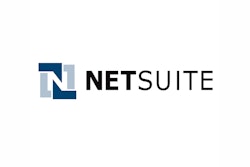By Jeff Ladner, Senior Director of Operations, IHS
Maintenance, repair and operations (MRO) materials consume a significant portion of operating costs with companies reporting expenses as high as 15 percent. The longer an organization exists, the higher the odds that it relies on MRO master catalogs comprised of inconsistent and poorly structured data, and inefficient business processes. These inconsistencies can have dramatic effects on the MRO supply chain and disrupt asset management programs.
Many recent studies identify poor asset management as the root cause of overall performance problems, such as poor asset utilization, low maintenance efficiency, high MRO costs, and risk of safety, health and environmental incidents. According to ARC Advisory Group, the cost of poor asset information management for a typical asset-intensive organization can be close to 1.5 percent of sales revenues.
Tracking, measuring and analyzing key performance indicators (KPIs) that are specific, measurable and actionable enables organizations to maintain a continuous path of improvement and leverage those metrics into successful operational excellence initiatives. Then again, selecting the right asset performance KPIs may be challenging.
Consider how a production manager’s view of asset performance management differs from a procurement or environmental health and safety (EHS) manager. The production manager focuses on productivity, and asset performance metrics that provide insight on asset reliability and availability, while a purchasing manager is concerned with material costs, contract compliance and supplier performance. An EHS manager worries about risks associated with people, assets and communities.
The one thing that these functional areas share is the MRO materials master and underlying data that keep company assets running smoothly. By neglecting inefficiencies in the MRO supply chain, business processes and foundational data, companies are compromising performance metrics. The most effective approach to MRO supply chain management includes promoting the global integration of structured master data and the metrics driving performance improvements in the following areas:
-
Procurement. A few areas to measure and analyze include historical MRO spend, contract compliance, supplier performance and open work orders from maintenance.
-
Maintenance and engineering. Plant engineers and maintenance staff are typically most responsible for the execution of an asset performance management program. Key KPIs should at minimum include scheduled maintenance compliance, emergency maintenance, unplanned downtime and work order closure rates.
-
Operations. Look at important measures like capital expenditure, asset life ratio, overall utilization and performance.
-
Production. Critical production KPIs include asset reliability, equipment failure ratios, product quality ratios, overall equipment effectiveness, availability, and percent uptime or downtime.
-
EHS managers. Organizations need to manage inherent risks in operations, and reduce the likelihood of major events and operational losses, tracking not only total incident recordable rates, but also process execution for corrective and preventive actions, risk ranking and vulnerability to high risk, etc.
-
Warehouse/logistics. Important KPIs include inventory stock-out ratios, lead time ratios, order point and quantity ratios, and critical inventory ratios.
-
Senior management. Senior management can contribute a number of KPIs, including profit margins, share value and enterprise investments related to continuous improvement in operations.
Understanding which metrics are critical to driving performance improvements within an organization is a key step in the operational excellence journey. But, just as important is to enable all stakeholders to streamline their workflows, integrate their supply chain, and maintain accurate and complete MRO master data.



















